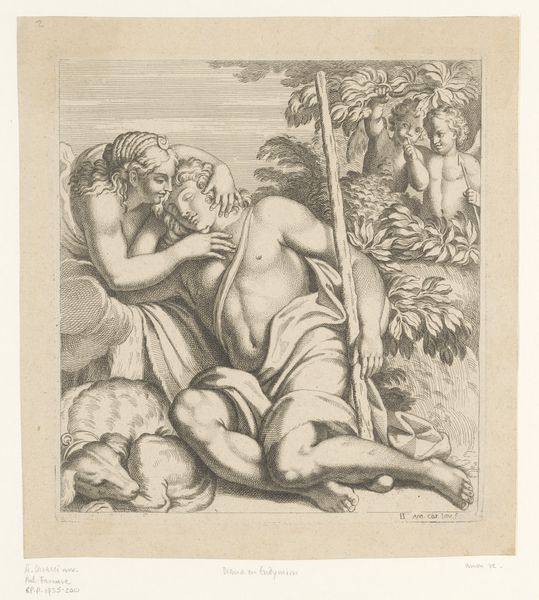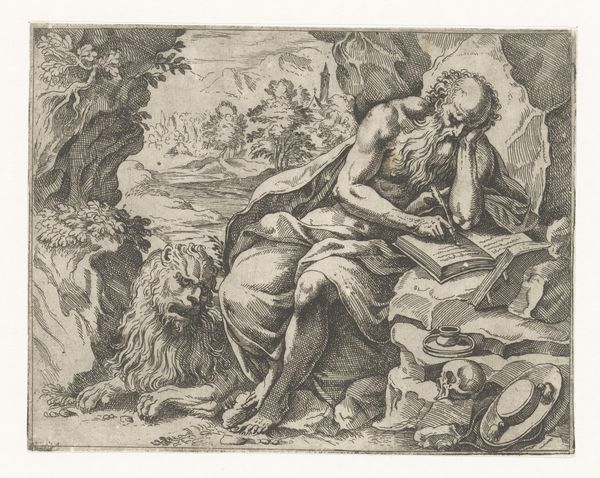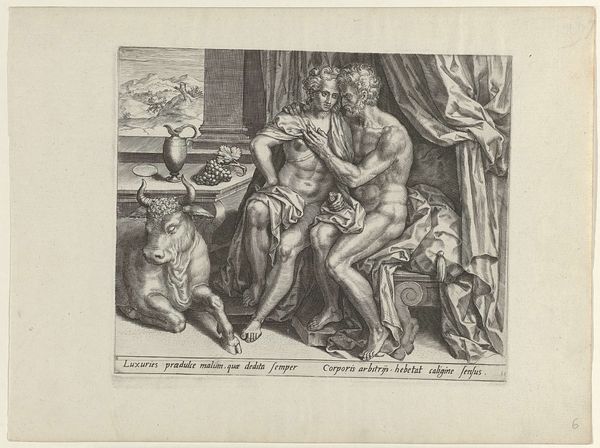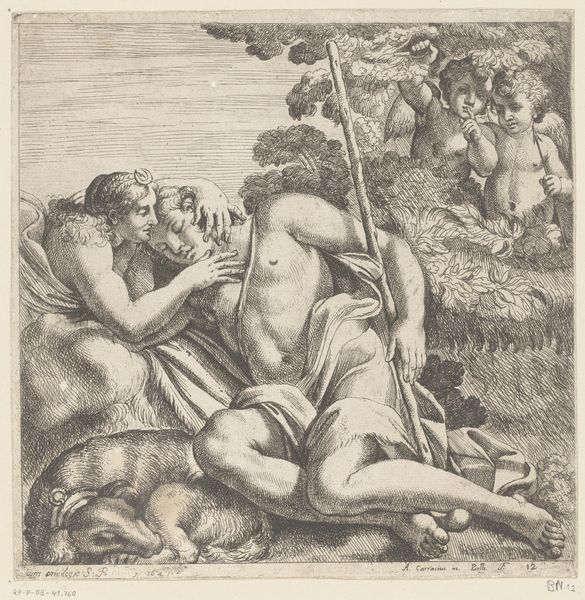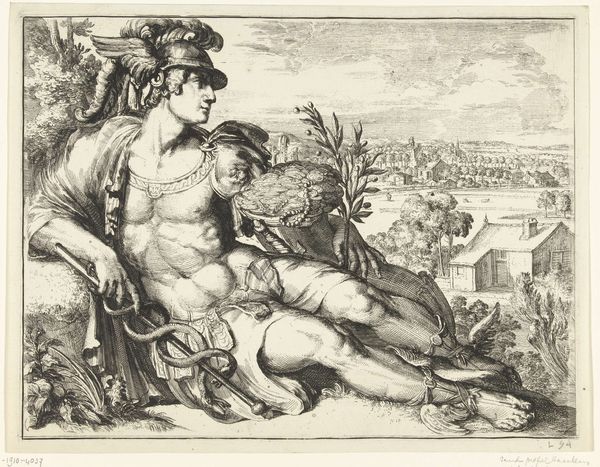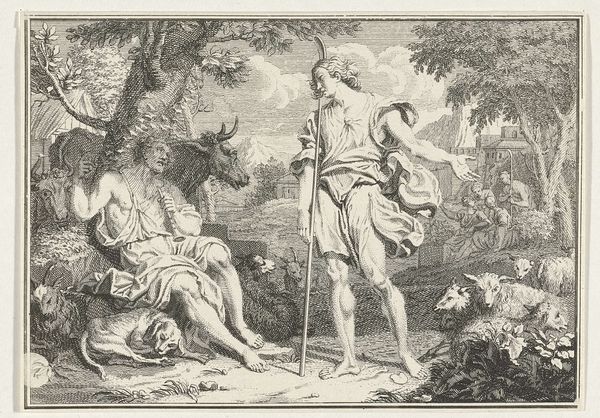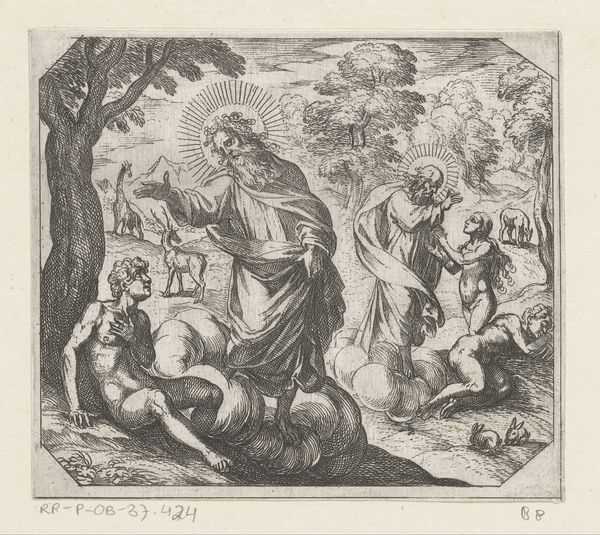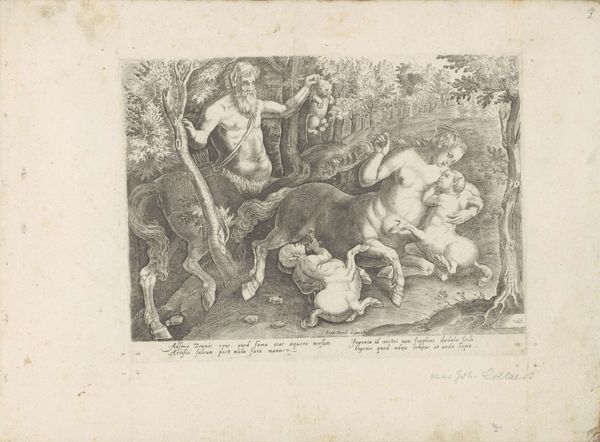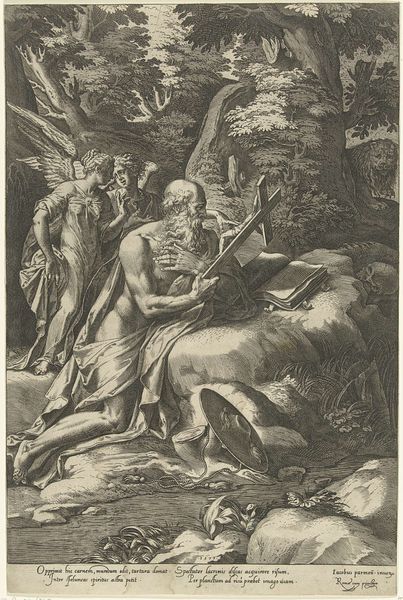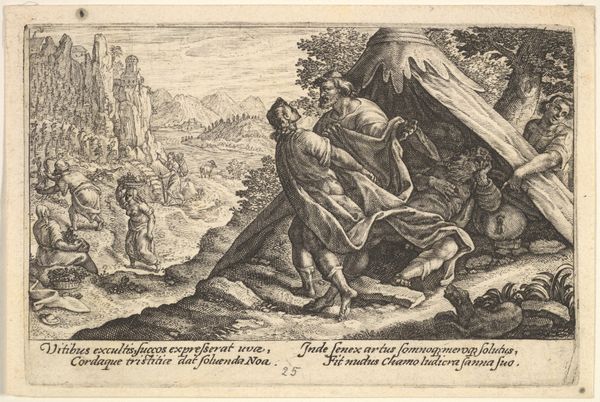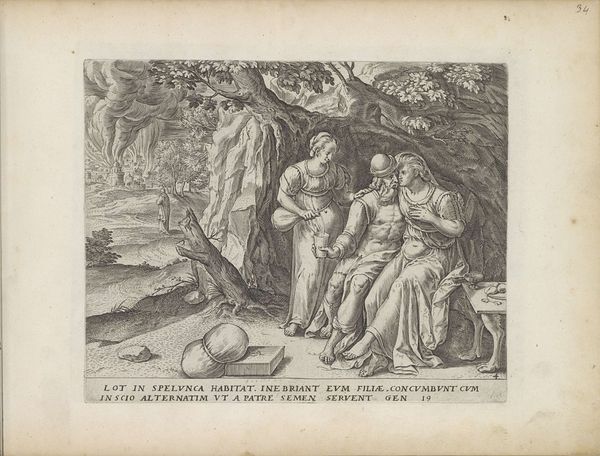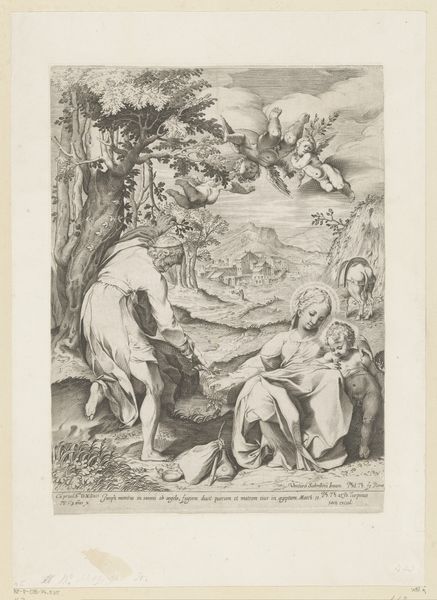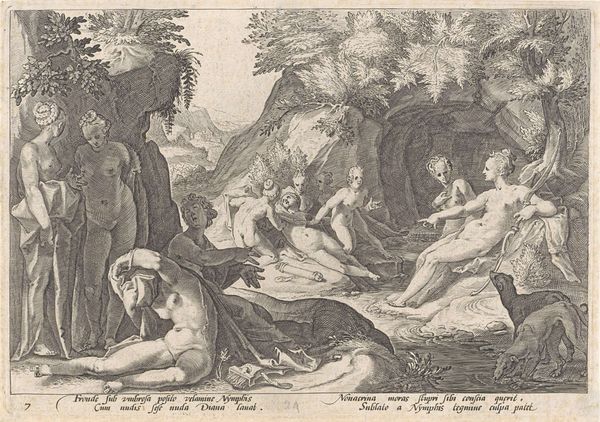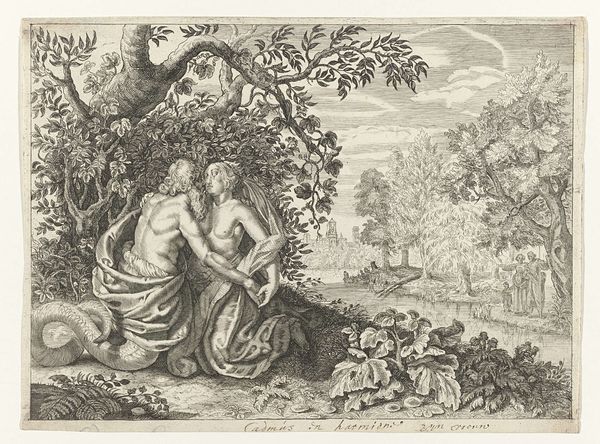
print, engraving
# print
#
dog
#
landscape
#
mannerism
#
figuration
#
history-painting
#
engraving
Dimensions: height 204 mm, width 255 mm
Copyright: Rijks Museum: Open Domain
Editor: This is "Afgunst," an engraving by Pieter Jalhea Furnius, made sometime between 1550 and 1625. It’s currently housed at the Rijksmuseum. The stark contrast and meticulous detail create a scene that's both unsettling and strangely compelling. What strikes you about the composition? Curator: The visual construction is intriguing. Observe how the artist uses contrasting textures – the smooth skin of the figure versus the rough landscape, for example – to draw our attention. The landscape itself seems to echo the turmoil of the central figure. Do you notice the figures battling in the mid-ground? Editor: Yes, it almost seems to amplify the central figure's inner conflict. Could you elaborate on that? Curator: Consider the serpentine forms interwoven in the hair and around the beast nearby; these repeated shapes point towards underlying themes. The tension arises not merely from the depicted scene, but also from the very way the image is structured – line, form, and texture all contribute to the feeling of unease. What connections do you see between form and content? Editor: The artist definitely used the texture and the figures to point to chaos and jealousy as themes. It feels like a mirror for the turmoil. Curator: Precisely. It’s a demonstration of how formal elements can become a visual language, allowing the artwork to "speak" beyond the representational. Editor: This analysis makes me view the entire piece in a different way. Now the construction itself enhances the whole story. Curator: Indeed. By looking closely at the artist's choices, we can unearth layers of meaning previously hidden from view.
Comments
No comments
Be the first to comment and join the conversation on the ultimate creative platform.
